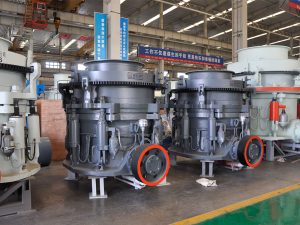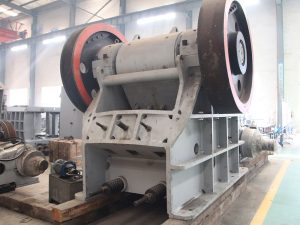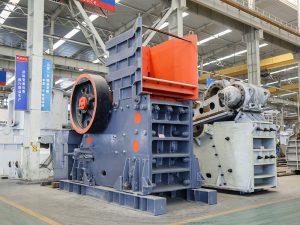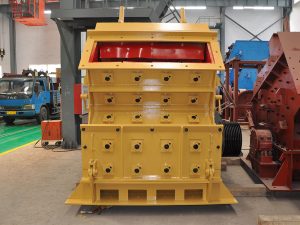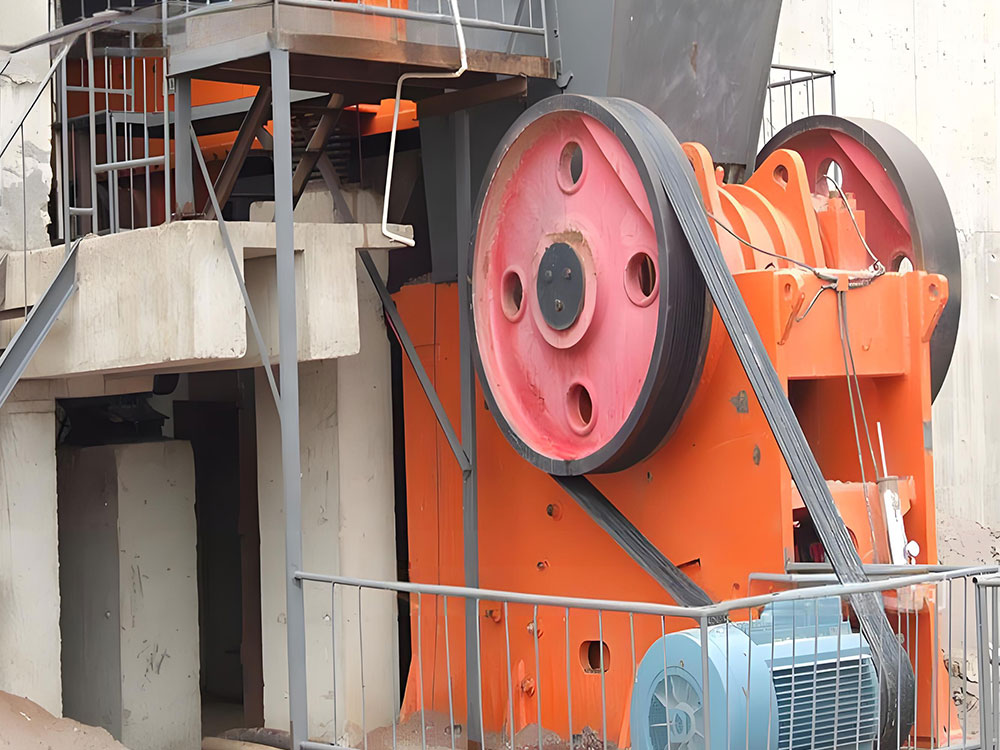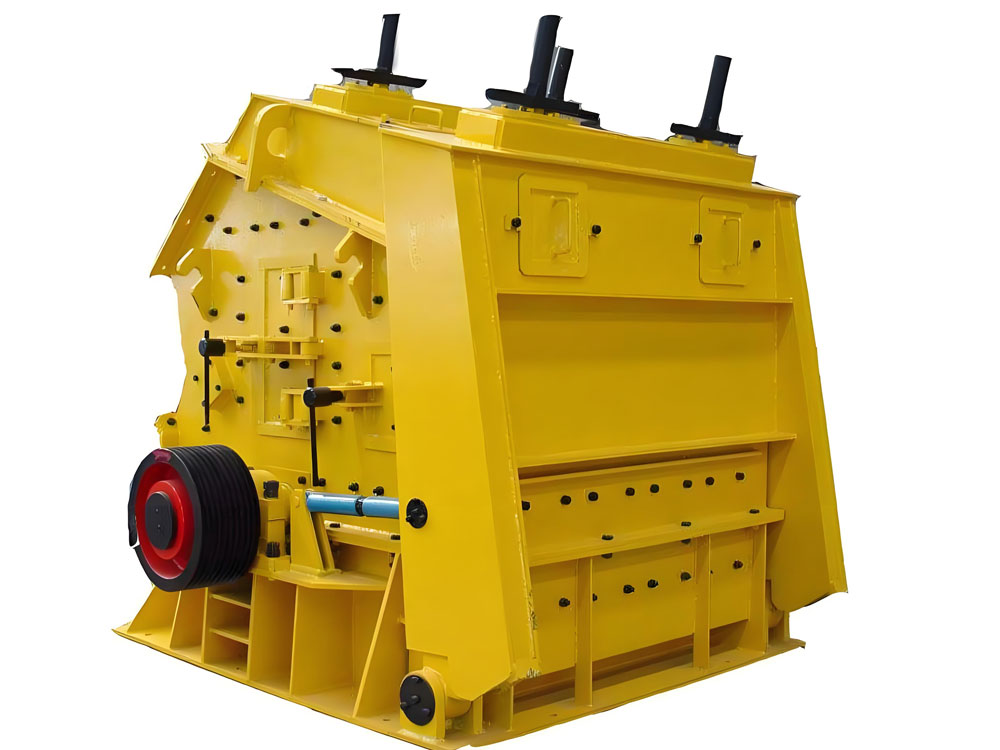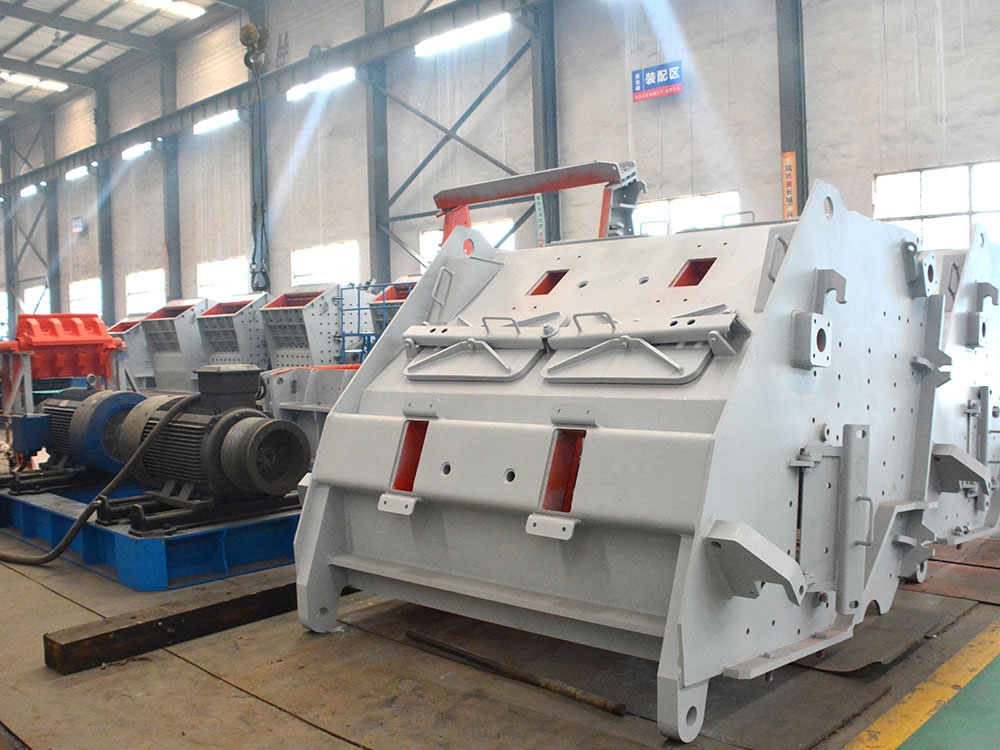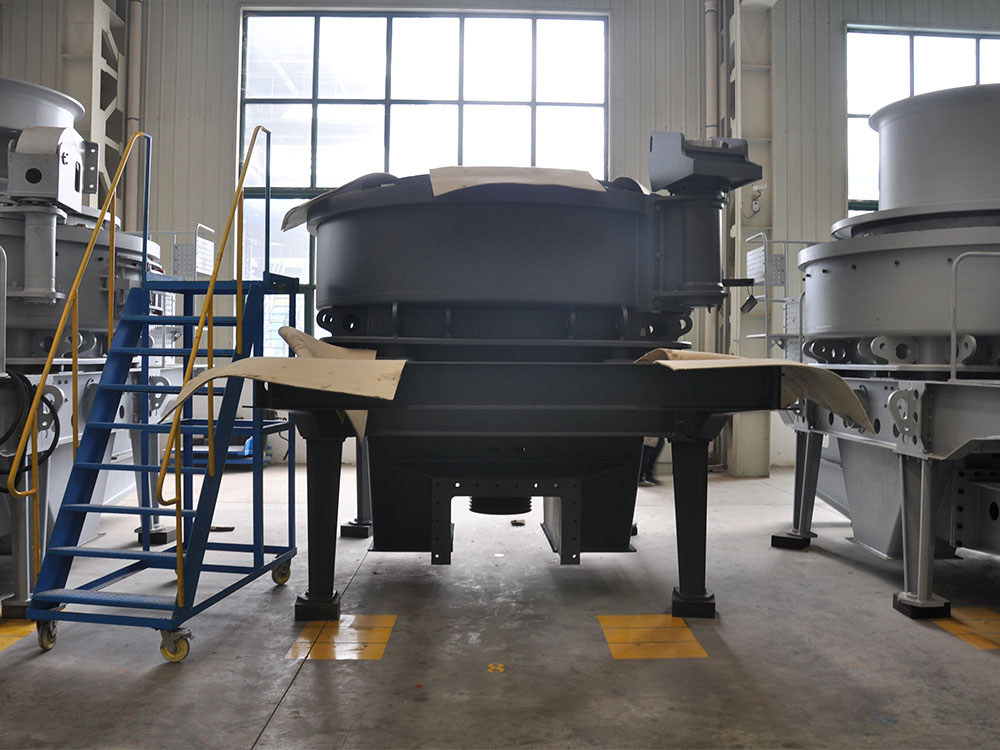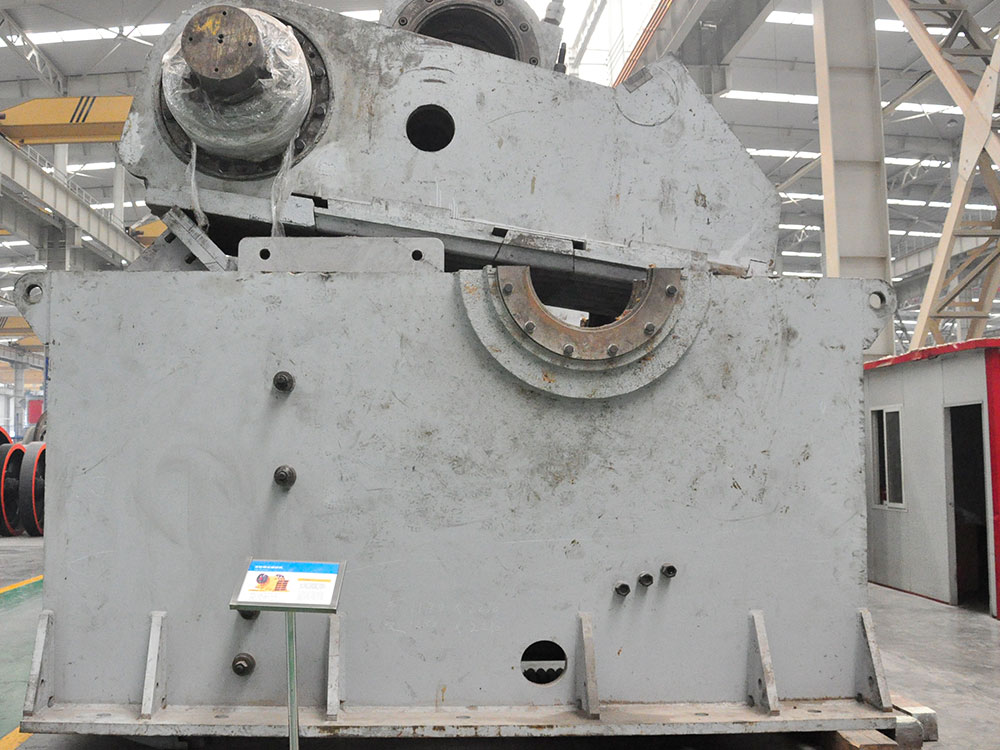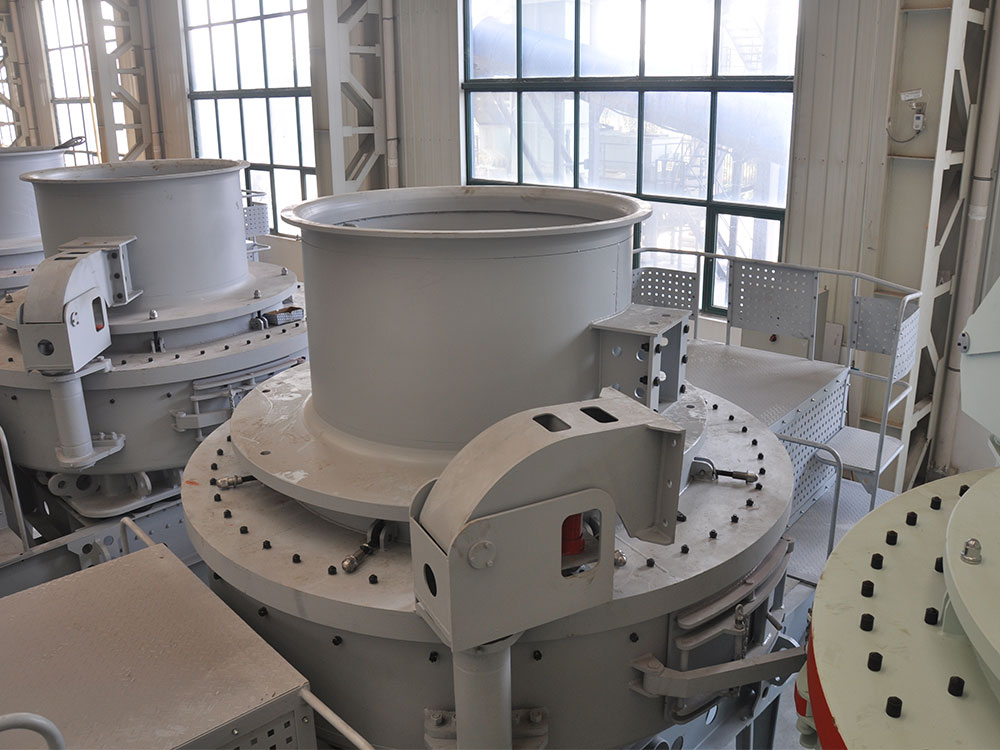The following provides a comprehensive analysis of the entire process and key technical points for crushing and sand-making production lines handling hard materials such as pebbles and granite, systematically organized based on industry practices and equipment performance parameters:
I. Raw Material Characteristics and Equipment Selection
Material Characteristic Analysis
Pebbles
Physical Properties: Mohs hardness 6-7 (close to quartz), compressive strength 200-300 MPa, silicon content 65%-80%, high abrasion resistance.
Processing Challenges: High silicon content accelerates equipment wear, requiring wear-resistant crushing chamber designs; particle shape control achieved through laminar crushing.
Typical Applications: Construction aggregates, railway ballast, concrete batching plants.
Granite
Physical Properties: Mohs hardness 6-7, compressive strength 100-250 MPa, quartz content 40%-60%, dense structure.
Processing Challenges: Quartz crystal structure prone to over-crushing; requires optimized discharge port control for finished particle size; rust prevention treatment needed when iron content is high.
Typical Applications: Premium aggregates, decorative stone, manufactured sand.
Core Equipment Configuration
Primary Crushing Stage
Jaw Crusher: Processing size ≤800mm, feed opening width 600-1200mm, discharge opening adjustment range 50-250mm.
Technical Advantages: Simple structure, low maintenance costs, suitable for primary crushing of high-hardness materials.
Case Study: A 2000 t/h production line utilizing a PE1200×1500 jaw crusher achieves a daily throughput of 30,000 tons.
Medium Crushing Stage
Cone Crusher: Recommended GPY/HPY series multi-cylinder hydraulic cone crushers employ a layer compression crushing principle to enhance particle shape quality.
Key Parameters:
Rotational Speed: 300-900 r/min
Discharge Opening Adjustment: 6-50mm
Motor Power: 160-500kW
Technical Breakthrough: The GPY series incorporates a hydraulic protection device that automatically discharges material during overload conditions, minimizing downtime.
Fine Crushing and Sand Making Stage
Hydraulic Double-Roll Crusher: Material is crushed through the relative rotation of two rolls, achieving a needle and flake content <8% with continuous gradation.
Technical Advantages:
Roll liner lifespan: High-chromium alloy material exceeds 3000 hours
Product yield: ≥90%
Energy consumption: 20%-30% lower than impact sand makers
Alternative Solution: VSI sand maker (vertical shaft impact type) suits scenarios demanding exceptional particle shape, but carries higher wear costs.
II. Typical Process Flow
Dry Production Line Flow
Process Design
Feeder (Vibrating Feeder) → Jaw Crusher (Primary Crushing) → Cone Crusher (Secondary Crushing) → Sand Maker → Vibrating Screen → Dust Removal System.
Key Parameters:
Crushing Ratio: 4:1 (primary crushing) × 3:1 (secondary crushing) × 2:1 (tertiary crushing) = Total Crushing Ratio 24:1
Rotor Linear Velocity: 28-35 m/s (sand-making stage)
Dust Removal Efficiency: Baghouse Dust Collector ≥99%, Emission Concentration <10 mg/m³
Suitable Scenarios: Water-scarce regions, areas with stringent environmental requirements.
Case Study
A dry production line with 500 t/h capacity, configured with PE900×1200 jaw crusher + HPC400 cone crusher + 2YKR3075 vibrating screen, achieved comprehensive power consumption of 25 kWh/t and 100% dust emission compliance.
Wet Production Line Process
Process Design
Feeder → Primary Crushing → Wet Screening → Secondary Cone Crushing → Sand Maker → Sand Washer → Dewatering Screen.
Water Consumption Control
Water usage per ton of material: 0.5-1.2m³ (Recycled water utilization rate ≥85%)
Sand Washer Type: Bucket Wheel Sand Washer (capacity 50-200 t/h) or Spiral Sand Washer (capacity 100-500 t/h)
Technical Advantages:
Significantly removes silt and clay, with finished product clay content <0.5%
Reduces equipment wear and extends service life of wear parts
Applicable Scenarios: Projects with raw material clay content >3% and high requirements for finished product cleanliness.
Case Study
A wet production line with an hourly output of 800 tons, configured with PE750×1060 jaw crusher + HPT300 cone crusher + XS3500 sand washer, achieved a daily water consumption of only 400m³ in its water circulation system. The finished sand gradation complies with GB/T 14684-2022 standards.
III. Technical Optimization Directions
Intelligent Control: Real-time monitoring of crushing chamber pressure and motor current via sensors, with automatic discharge opening adjustment.
Wear-Resistant Material Upgrade: Utilization of tungsten carbide coatings and ceramic composite liners extends wear part lifespan by 30%-50%.
Modular Design: Integrates crushing, screening, and sand-making units, reducing installation time to 7-15 days.
Green Manufacturing: Features a waste heat recovery system that utilizes crusher friction heat for material preheating, lowering energy consumption by 10%-15%.
IV. Industry Data Reference
Market Trends: Global manufactured sand production reached 4.5 billion tons in 2024, with China accounting for over 60% and an 8.2% CAGR.
Cost Structure: Equipment procurement (35%), energy consumption (25%), labor (15%), maintenance (10%), and other expenses (15%).
Policy Direction: The Ministry of Housing and Urban-Rural Development's “Guiding Opinions on Promoting Construction Waste Reduction” mandates an 80% mechanically produced sand usage rate in new construction projects by 2025.
Through scientific equipment selection and process optimization, crushing and sand-making production lines for hard materials can achieve efficient, low-consumption, and environmentally friendly operation, meeting aggregate demands for infrastructure construction.


